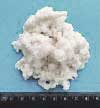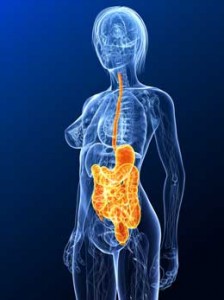



Audrey’s Story
In 1984 I was diagnosed with Epstein Barr Virus after sudden onset of symptoms and tested positive for herpes zoster and Coxsackie. I suffered severe gut issues (candida from years of antibiotics, acid reflux, cramping, bloating) as well as severe brain fog that I have lived with 24/7 for 30 years. I also started experiencing severe allergies and skin rashes, especially to environment stuff, as well as chemical sensitivity. Prior to diagnosis, my diet consisted of wheat, sugar, dairy, carbs, etc.
I was given Meyers cocktail IVs and high doses of vitamin C with no relief. I researched and began a nutritional program, eliminating wheat, sugar, and dairy from my diet. My gut issues were less after about 1 year, but were never gone.
I moved from NYC to AZ in 1990 to come to terms with the stressful life I had been living. By this time I had received a certification in fitness and nutrition. Sedona was considered to be a healing place, so I gave it a try. My nutritional program became stricter than before. I was able to exercise moderately and sleep well; however, brain fog and gut issues remained.
In 2011, I started going to Incline Village, NV as a new patient of Dr. Dan Peterson. At this point my gut issues were severe (by this time I had three colonoscopies which revealed nothing), so I was put on a several month regimen of Xifaxin, followed by prescription probiotics. There was absolutely no gut relief. An extensive food panel test at Dr. Peterson’s revealed more sensitivities and I removed them. In January, 2012, I started a 6 month Ampligen trial.
My viral load was less, but my gut was as bad as ever.
I had been off Ampligen for about eight months when I attended a lecture by Dr. Kenny De Meirleir the Whittemore Peterson Institute in early 2012. Dr. Kenny De Meirleir talked about gut issues, and his belief that they’re a main cause of many ME/CFS patient’s problems. During that year, other professionals starting to discuss the gut as well.
Dr. De Meirleir did not mention cultured foods, but after I started researching I found Donna Schwenk’s site www.culturedfoodlife.com and her ‘holy trinity’ of fermented foods: kefir, kombucha, and cultured vegetables.
Donna Schwenks Story
I learned how to easily make all three at home and made them a part of my daily diet. Since then my gut issues and my allergies and sinus problems of almost three decades have disappeared and my energy has improved. I continue to live a strict wheat free, gluten free, dairy free, and sugar free diet. The only two problems I still have to negotiate my life around is 24/7 brain fog (probably caused by the herpesviruses) and chemical sensitivity.
Cort’s Experience
I began making kefir a couple of months ago using a culture provided by Audrey. I noticed immediate increases in mental clarity, energy, and feelings of relaxation. I also noted an immediate increase in my bowel movements and reduced bloating.
Since then the feelings of increased mental clarity have subsided, but the feelings of relaxation and energy have mostly continued. This is despite the fact that I’ve beaten up the kefir culture in just about every way possible – high temperatures, irregular feedings with milk, frequent shaking – on my extended camping trip around the west.
I have never noticed any difference from taking probiotics or store-bought kefir or yogurt. In my experience, home-made kefir is far superior to the store bought products. The only other fermented product I’ve noticed immediate effects from was a ‘live’ sauerkraut produced by a Santa Cruz, CA firm which was not pasteurized.
Fermented Foods
Emerging research … indicates that fermentation may magnify the known benefits of a wide variety of foods and herbs, influencing the bioavailability and activity of the chemical constituents. – Selhub, Logan and Bested
Audrey’s gut problems persisted through her use of Ampligen, Xifaxin, probiotics, neutraceuticals, and dietary changes – but vanished when she added fermented foods in the form of kefir, kombucha, and fermented vegetables (Donna Schwenk’s “Holy Trinity”) to her diet.
We generally equate fermentation with moldy, smelly, and perhaps dangerous substances, but as Alan Logan and Alison Bested point out in a recent review article, it’s only been in recent times that fermented foods have not been an important of human’s diets. Humans have been fermenting cereal, dairy, vegetable, fish, and meat products probably for over 10,000 years.
Resource: Learn how to make kefir, kombucha, and fermented vegetablaes at Donna’s site. Her free Ebook provides recipes. You can also buy starters for kefir, kombucha, and vegetables there. Each sets you back about $25, but you only need to buy it once.
Health Rising is not affiliated with Cultured Food Life in any manner.
Let’s take a look at Donna Schwenk’s ‘holy trinity’.
Kefir
Yogurt is the fermented milk product that gets the most attention, but Donna Schwenk, the creator of the Cultured Food For Life website, argues that kefir is far more powerful.
In her Cultured Food For Life book, Donna states that homemade kefir has 30-56 strains of good bacteria, while yogurt has 7-10. While kefir provides good bacteria directly to your gut, the bacteria in yogurt simply helps to sustain the good bacteria already found in your gut. Kefir bacteria repopulates the gut while the bacteria in yogurt passes through it within 24 hours. Both are helpful, but one builds the foundation for gut and the other helps sustain it.

Kefir grains look like chunks of cottage cheese or caulifower heads. Kefir grains are probably a better way to make kefir than kefir culture.
Kefir ‘grains’, which look like cauliflower heads, are a combination of lactic acid bacteria and yeasts held together in a matrix of fats, proteins, and carbohydrates. The grains (or scoby) can grow to the size of walnuts and are usually white to yellow in color. They provide the bacteria and yeasts used to ferment milk and produce kefir.
While Lactobacillus bacteria (such as L. delbrueckii subsp. bulgaricus, L. helveticus, L. kefiranofaciens subsp. kefiranofaciens, L. kefiranofaciens subsp. kefirgranum and L. acidophilus) are always found in kefir, the other bacteria found in kefir products can vary widely.
The main lactose fermenting yeast kefir are Kluyveromyces marxianus/Candida kefyr, Kluyveromyces lactis var. lactis, Debaryomyces hansenii e Dekkera anomala. Other non-lactose fermenting yeast are present. Besides breaking down milk sugar, the yeasts in kefir also synthesize B vitamins which in turn assist microbial growth in the kefir.
Kefir grains ferment milk best at around 70-80 degrees but are robust and can ferment the milk (more slowly) at a wide range of temperature. However, they will die above 104 degrees.
During fermentation, which usually occurs within 24 hours, most of the lactose in the milk is broken down into lactic acid, ethanol, and carbon dioxide — often rendering the beverage tolerable to those with lactose issues. Kefir’s slower passage through the digestive tract may also assist lactose digestion.
Whether this is true of store brought products (sometimes called “kefir mild’) is unclear. The light yellow colored, slightly sour, effervescent, and mildly alcoholic kefir made at home has little resemblance to the sweet, dense, milky-appearing kefir bought at the store. Check out Donna Schwenk’s website for ways to make kefir taste really good.
Kefir grains can be used to ferment ‘milk’ products ranging from cows milk to goat milk to soy, rice, and coconut milk as well as fruit juices and coconut water. In contrast to pasteurized kefir products, the culture in home-made kefir is live. Most people refrigerate their kefir, but it can be kept up to 30 days without refrigeration. It can be dried and maintain its potency for up to 12-18 months. Kefir grains appear to be the most potent way making kefir. (A powdered culture is used to produce kefir in commercial products.)
Healthful Effects
Historically kefir has been used to treat gut issues, hypertension, allergies, and even some types of heart disease. Kefir studies, however, are relatively rare, and when they take place usually involve animal models or lab studies, not humans. Kefir has been shown to suppress the growth of E. coli and provides, in contrast to milk, a poor environment for the growth of fecal bacteria.
These studies suggest that besides inoculating the gut with good bacteria, kefir may be able inhibit a wide variety of pathogenic bacteria (E. coli, Candida albicans, Staphylococcus aureus, L. monocytogenes, Salmonella Typhimurium and others).
Several mouse studies suggest kefir may have anti-inflammatory, anti-oxidant, and anti-cancer properties. Laboratory studies suggest kefir may be able to suppress the Th2 immune response as well as several pro-inflammatory cytokines.
Kombucha
Kombucha is a fermented, effervescent, lightly sweetened tea made by adding a colony of bacteria and yeast (called a scoby or zoogleal mat) to sugar and tea and allowed to ferment. The gelatinous clump, or scoby, that floats on the top of the tea is distinctive.
Kombucha appears to have originated in northern China. From there it spread to Germany and Europe sometime in the early 1900s. You can now find commercially produced Kombucha in health food stores and even some grocery stores across the U.S.

The scoby – a gelationous compound of bacteria and yeast – floating on the top of the kombucha – is unmistakable
Kombucha contains acetic acid bacteria (Acetobacter aceti, Acetobacter pasteurianus, Gluconobacter oxydans) and different yeasts (Saccharomyces sp., Zygosaccharomyces kombuchaensis, Torulopsis sp., Pichia sp., Brettanomyces sp.) as well (at times) some lactic acid bacteria. The most complete scientific study of Kombucha indicated that the Gluconacetobacter genus was most common, a significant Lactobaccillus population was present, and Zygosaccharomyces dominated the yeast population.
Fermentation of the yeast turns Kombucha into an effervescent, mildly alcoholic (0.5%) product. The Gluconacetobacter Bacteria transforms most of the alcohol into acetic acid. Kombucha’s acidity and low level of alcohol makes it resistant to most airborne molds or bacterial spores. Kombucha has been shown to inhibit growth of harmful microorganisms such as E. coli, Sal. enteritidis, Sal. typhimurium and Sh. Sonnei. The Wikipedia page states “kombucha is relatively easy to maintain as a culture outside of sterile conditions”.
The scoby (bacteria and yeasts) promotes microbial growth in the kombucha for about six days and then it declines.
The Food and Drug Administration (FDA) has gone so far as to test Kombucha’s microbiological properties and has concluded (yes!) it’s safe for human consumption. Kombucha is a hot item, but not everyone has jumped on board the Kombucha bandwagon.
Until more information is available on Kombucha’s effects, the Mayo Clinic, however, comes down against it’s use. Warning that stomach upset and allergic reactions can occur, it notes that home-brewed Kombucha is not produced in sterile conditions and that the acids in the drink can leach lead from ceramic pots (Cultured Food Life recommends using glass containers).
Health Claims
Proponents claim Kombucha tea can stimulate the immune system, prevent cancer, and improve digestion and liver function. The little research done on Kombucha means there’s no direct scientific evidence to support these health claims in humans.

Xafaxin works in one person, fermented foods work in another and herbs work in others: the digestive system is nothing if not complex
Whatever Kombucha does it probably does so mostly through the actions of glucuronic acid (GA), a detoxifier/antioxidant that snaps up toxins (xenobiotics), binds them and transforms them into compounds that make it easier for the body to eliminate them. That process, of course, helps keep them from being absorbed into your tissues. One report suggests Kombucha enhances the activity of glutathione – an important antioxidant in the body.
Given the increased levels of oxidative stress found in both Fibromyalgia and Chronic Fatigue Syndrome from the blood to the muscles to the brain, some help with detoxification is probably not a bad idea.
Kombucha’s detoxifying properties may protect the gut membranes and perhaps assist in ameliorating leaky gut syndrome. It also appears to stimulate digestion by enhancing gut motility.
Fermented Vegetables
We’re going to be going into the subject of fermented vegetables (and fermentation) and health more in future blogs. For now check out a list of vegetables and other foods humans have fermented: cabbage (sauerkraut), pickles, radishes, greens, turnips, garlic, onions, carrots, mushrooms, soy (miso, tempeh),rice (koji) and others.
_____________________________________________
Health Rising is not affiliated with Cultured Food Life in any manner.










Came across your video. I have Fibromyalgia and Lupus. I have drank just the kombucha tea bought in store and noticed the energy it gives me. Maybe I should give this a try and pass it on to the many others who are in my family with allergies and epilepsy and so on. What do you think? I just hope I can pick up how you make it and all. Thanks for sharing and I hope that I can pass it on to others and it bring them hope and joy too. blessings
You can find the recipe for Kombucha at the website mentioned in the article. I can tell you that Audrey now makes as good or better tasting Kombucha than you can get in the store. 🙂
It’s really very easy to make. Good luck!
This is an extremely timely article for me! Aside from my “normal” ME/CFS issues/symptoms, brain fog and gut issues have been a huge issue the last 10 months. Thank you SO much!
What is ME?
I’ve been making my own kefir for a year now, initially to treat my osteoporosis, which was the result of years of non-weight bearing inactivity. I noticed right away that my gut issues were significantly better, a very pleasant bonus. I like the taste as well, although my family refuses to try it. They don’t know how easy it is to sneak into foods undetected 🙂
Ha! Ha!
Good for you! This stuff is good….
Hi Cort and everyone,
For the record, my orthostatic intolerance ceased being well controlled several months ago. I have taken Florinef for twenty years after the study from Johns Hopkins and was able to stand longer at the beginning of my use of Xifaxan until now. I had been able to shop for 45 mintues without lightheadedness and nausea until recently.
My PCP took my blood pressure once while I was flat followed by once as soon as I stood and my BP dropped 20 points. He diagnosed POTS, doubled my florinef, put me on salt tablets (3-4 grans a dat) and suggested custom made support stockings. I have an appointment with a specialist at Stanford at the end of the month for testing. I also have high blood pressure, and yes, you can have both at one time although practically every doctor I’ve seen has questioned the use of Florinef (generic Fludrocortisone) with meds to lower blood pressure.
FOR THOSE OF YOU WITH GUT ISSUES: I saw my wonderful gastro doc today, the one who started me on Xifaxan about 2 years and 9 months ago. He went to the Portland conference with Dr. Pimentel earlier this year at my request to learn more about IBS and SIBO since Dr. Pimentel of Cedar-Sinai UCLA in Los Angeles is the world-renowned expert
who proved that IBS is caused by Small Intestinal Bacterial Overgrowth of SIBO.
He is now using a breath test that can be done at home and mailed back which Dr. Pimentel validated as consistent with the tests he does in his office in LA for research and clinical purposes.. It is mailed to Commonwealth Laboratories Inc. in Salem, MA. He gave me a kit to try and it is called the Small Intestinal Bacterial Overgrowth (SIBO) Lactulose Breath Test Kit and comes with everything you need plus instructions and a video to watch how to do it online. I haven’t checked whether this is something you need a doctor to order for you or whether you can order it yourself. You may need a doctor to read the results but I’m not sure. I’ll keep people posted on my experience as I learn more.
Commonwealth Laboratories Inc.’s website is http://www.hydrogenbreathtesting.com, their email is customerservice@commlabsinc.com and their Patience Assistance number for questions regarding insurance coverage, test administration or anything else is 781-659-0704. The step-to-step video is at hydrogenbreathtesting.com where you click the tab “Taking a Test” to find the video. The test is for both hydrogen and methane despite the site name. My doctor said that most people have dual hydrogen and methane overgrowths, Dr. Pimentel adds a second antibiotic, Neomycin, with Xifaxan for 10 days for I think methane but I can’t remember for sure which one it is for now.
My doctor has been unable to find Dr. Pimentel’s up-to-date Cedars-Sinai diet online for some reason. He suggested the diet by the Gottschall’s and their most up-to-date book “Eat Well, Feel Well” from Amazon. It’s called the SCD diet.
He also told me that IBS with predominant constipation is caused by methane overgrowth according to Dr. Pimentel.
We didn’t discuss probiotics this visit; he has told me in the past to use them.
His take on the group in Portland which hosted Dr. Pimentel, the alternative nutritionist school run by nutritionist Dr. Allison Siebecker (who also trained there and is not an MD) was that their advice was based on anecdotal information information only, not scientific knowledge, and that they are well-meaning and were extremely respectful of Dr. Pimentel. We found it puzzling that Dr. Pimentel would be speaking at such a forum about his scientific research and clinical research re IBS and SIBO rather than at an academic scientific institution. The presentations at the Open Forum seemed to be from students at that school who were asked to speak but didn’t have much to share. This is not to say they couldn’t be helpful to people looking for anecdotal information.
I hope this information is helpful for people with gut problems. I will try to update it as I learn more. May we all be as well as possible. Esther Siebert, siebertesther@gmail.com
Thanks Esther for the update.
I think we realized that either the gut wasn’t all it or that your gut issues weren’t completely controlled. I’m sorry to hear though that the OI is back and I wish you luck getting that oh so fundamental problem under control again.
Thanks for the information on the test – I didn’t know about that.
This was a great reminder of the potential power in these things. I never found much relief from shop bought yoghurt but what does help me is naturally fermented miso soup. I never boil it, just stir into cold water and then add a sufficient amount of hot water to make it a reasonable temperature. It makes for a warm meal, somehow it makes you feel that you’ve had some real food.
I also use naturally fermented soya sauce in my cooking, trying not to boil it (i.e. adding it as late as possible). It’s not working as well for me as the miso, though. The trouble with miso is that it’s expensive. Kefir especially sounds like a very cheap option. I just need to get hold of the culture. I tried kombucha as a starter was offered to me by someone but wasn’t good at keeping it alive, so it was a failure.
The best my tummy has ever been was when I was camping in Norway and eating lots of lovely wholemeal bread, strawberries and local yoghurt. Strawberries seem to have a really good kind of acid in them (and other berries are great too).
Im having gut issues right now also, its like im so bloated especially at night. Im eating yogurt every night, but its just not enough. The summer heat also effects me tremendously. Migraines in AM. I’m gonna research this, and give it a go.
It might be the dairy in the yogurt that’s causing the problem. I cut out dairy completely. The kefir I use is water kefir. Very easy to use. I second ferment with lemons and ginger.
Making sauerkraut is also remarkably easy. I now eat that at night
Yes it could definitely be dairy and I wonder a lot about commercial kefir products as well. Home-made kefir is much, much more powerful in my experience.
I also bloat after eating eggs and wheat and sweets – diet can be a big deal with bloating.
My dear friend Audrey showed me how to make the ‘trilogy’ and it has done wonders for my digestion. I have always had a super slow gut, but I am now more regular than I have ever been in my life and I am off of cimetidine (acid reducer) for the first time in years.
I love the process of making things that I know are good for me. I can only hope that the good bacteria will help regulate my immune system overtime. I know it can’t hurt… and besides ..the kombucha is delicious…my after meal treat! Thank you Audrey!!!
Cort,
Thanks again for your amazing breadth of information, which helps me a great deal in the “hope” department.
I noticed that Kombucha with black tea and not so much the sweetened ones helps my energy level greatly. My first attempt at making my own wasn’t successful, but it was d/t my fault and not having everything ready to harvest and bottle.
I was put on Xifaxin for a 10 day trial by a gastroenterologist who was overwhelmed by abnormals on metabolic health profile(genova) which he wasn’t familiar with. On the 4th night I slept and woke up refreshed and thinking clearly. It was like a miracle. Sadly it only lasted for ` 24 hours, but I know the improvement is possible which gives hope. I have tested strong positive for Hydrogen Sulfide twice and think this is throwing off multiple energy and other enzyme systems and function. I am going to be doing the lactulose test soon, so hopefully they will find justification where I can get insurance to cover a longer tx. with Xifaxin!
Doc
Keep going Doc! It sounds like you’re on the right track and just need to keep refining your approach. Good luck!
When I first became aware of Kombucha it was made from a mushroom. I thought that was the only way it was made and now I am confused after reading this information. Any input would be appreciated.
From what I’ve read for this blog it’s never made from a mushroom; it’s a culture applied to tea. I wonder if there’s some similar that is made from a mushroom?
Great to hear how you benefit from the fermented products. Glad to hear that homemade fermented products seem more powerful than store-bought products, as I’ve already tried the latter without success.
Audrey, your starter culture seems to be good stuff. Did you buy it from the culturedfoodlife website?
I can tell you that she did.
thanks!
My story is similar to Donna Schwenks. Been ill since 1988, my wife, too. We tried Xifaxin and we had great energy while we were on it, but you can’t stay on it. We’ve found acupuncture and it greatly improved our energy and gut problems. But all acupuncturists are not the same. If you want infor about ours email me at cost1@fastmail.fm
Trying herbs not instead of Xifaxin and trying to kill the candida. It’s a never ending process.
Hi Cort,
I was wondering if you were using kefir before you started culturing your own? They sell cultured Kefir from a local farm close by where I live which I use. I’m trying to decide if its worth making my own given they have so many foodie farm types where I live and pretty clean foods. Anyone else with experience with this?
Thanks,
Sandra
Sandra
If you tolerate dairy, a local farm may be fine- I started making my own non-dairy at home cause dairy is an issue for me
I’m no expert but it sounds like a good option to me. Another question is what does pastuerization due to the commercial brands of kefir. I’m not suggesting using raw milk – you use pasteurized milk to make Audrey’s kefir – but after the kefir is made – I can only imagine that pasteurizing is not helpful.
It’s amazing how milk can sit out with kefir grains in it and not go bad!
Beware of putting too many histamine producing bacteria in your gut. I thought my homemade kefir was great until I developed histamine intolerance. Now I can’t tolerate any fermented foods.
Glad to see this article. I’ve found fermented foods to be one of the more effective treatments that I’ve tried for my ME/CFS and mold illness — I think that part of it is that the mycotoxins are acting to create dysbiosis (killing off a wide swath of microorganisms in the gut and thus allowing others to grow out of control).
The momsAWARE site has some good instructional material on fermenting:
http://www.momsaware.org/food-probiotics.html
(I’m not affiliated with this organization – I just have found it to be helpful.)
Also, Yemoos sells good-quality products and has some good information. I’m not affiliated with them either.
http://www.yemoos.com
I started being interested in fermented foods when I saw some studies suggesting that homemade yogurt was helpful in improving immune function in HIV+ patients not on antiretrovirals.
http://www.ncbi.nlm.nih.gov/pubmed/20463586
The fermented foods seem much better for this purpose than probiotics in capsules, based on the small stream of literature on the topic.
Great post Cory!.. never under estimate the power of healthy bacteria. Kefir has helped my gut health immensely as has Beet kvass and sauerkraut. I had an issue with upper fermenting gut where it was not sterile and loaded with bad bugs but by eating protein and fat only for 4 weeks, I believe the upper gut is now sterile again! and feel must better for it. I must admit I have ne we tried kombucha.. it looks almost repulsive which is why it puts a lot of people off.. but I think I will have ro give it a go soon. You say that Audrey still has brain fog?.. has she looked at adrenal fatigue tests, she maybe low on cortisol and or DHEA and perhaps low thyroid.
Steve
FYI – I do take levothyroxine so my thyroid levels have been fine for years. I did have Adrenocortex Stress test done. The ratio of DHEA to cortisol was normal. My sudden onset in 1984 was attributed to severe stressful events that took place within short time frame- that’s when fog started and has been my constant companion ever since!
If you actually make the kombucha yourself the Kombucha scoby looks like an alien from another planet 🙂
My story is so similar to Audrey’s. 32 years of this life following a c-section on 7/4/82. I have done Kefir in the past from another supplier and did not get results. Want to know if Audrey did the trilogy. Also would like to connect with Audrey if that can be arranged through this site.
Thank you,
Sheila
Sheila
Feel free to contact me at (928) 301-2078- I live in AZ and am awake early but go to bed 7pm-
FYI – I didn’t use store bought kefir before making my own since I don’t use dairy. At home I’ve been using cashew milk since I’m allergic to almonds –
Thank you for this interesting post, Audrey and Cort! May I ask how quickly you noticed an increase in energy? And how noticeable that increase was? Thank you!
My energy increased within first few days- I had been living in Incline Village NV as I was seeing Dr Peterson at that time. I started by drinking a bottle of GT kombucha and eating Bubbes pickles, both of which I was able to buy at local,supermarket. Even my gut felt better immediately. I didn’t add home made non-dairy kefir until 6 months later when I moved back to AZ. I have now been consuming all 3 daily for 8 months and this is the first time in 20 years that not only is my gut fine but my severe allergy symptoms have not been an issue.
That’s great, thank you!
Hi Audrey,
Thanks for your reply. I can’t tolerate cow milk, but seem to be ok with goat milk. ATM I use Redwood Hill Farm Cultured Goat Milk Kefir. It costs less than the quart of fresh goat milk I would buy to make my own so that gave me pause. I guess I could try almond or cashew as well.
Thanks everyone for telling us of your experiences including warnings about using kefir. No one size fits all as we all know!
Sandra
We make home made soya yoghurt, which combined with my necessary short flat rests made it possible for me to have improved enough to ride a friend’s horse a couple of days a week for a hour. The starter was plain soya yoghurt from the grocery store.
I also have kefir grains that I use from time to time. They need more fat to thrive than is available in soya milk, where they simply stay stable and produce just enough to give me about 10 fluid oz of product daily.
I’m now using a full fat jersey milk to keep it going at a reasonable rate. I’m going to try some of my grains in a underheated yoghurt maker to see if that helps with more growth. I’d like to make some soft cheese with kefir, just as I can with draining soya yoghurt.
I think that gut support is for me vital to reduce and even eliminate my symptoms. It was just delightful to recognize the feeling of being tired and not fatigued.
I had a half year of improving and feeling better and better before being struck down by a virus. I’m hoping that continuing with fermented foods will return me to improved health.
Suella
Good luck Suella!
To Audrey or someone that can help I have a question. I live in Florida and want to get started on the Kombucha. Would it be best for me to order from the supplier that has the dehydrated Kombucha because of the summer heat not being good to order the fresh Kombucha? Thank you, Sheila
This kefir culture is tough. I can only assume it would be fine, but if you’re concerned you might want to contact the owner of the website who makes it.
Temperatures over 104 degrees I think will kill it.
Sheila
I know nothing about using dehydrated Kombucha so can’t give opinion there. I’ve not had issue with kombucha being sent to me as I follow tracking and know when it will be delivered. Also Whole Foods sells kombucha starter kits, which contains scoby and fermented tea.
I can’t believe I only now figured out what the right question was to ask, or rather what to search on. I have been struggling with trying to make kefir for over 2 years. Thank you Audrey, Cort, Donna, and all fellow ME/CFS/FM travelers.
Good luck! 🙂